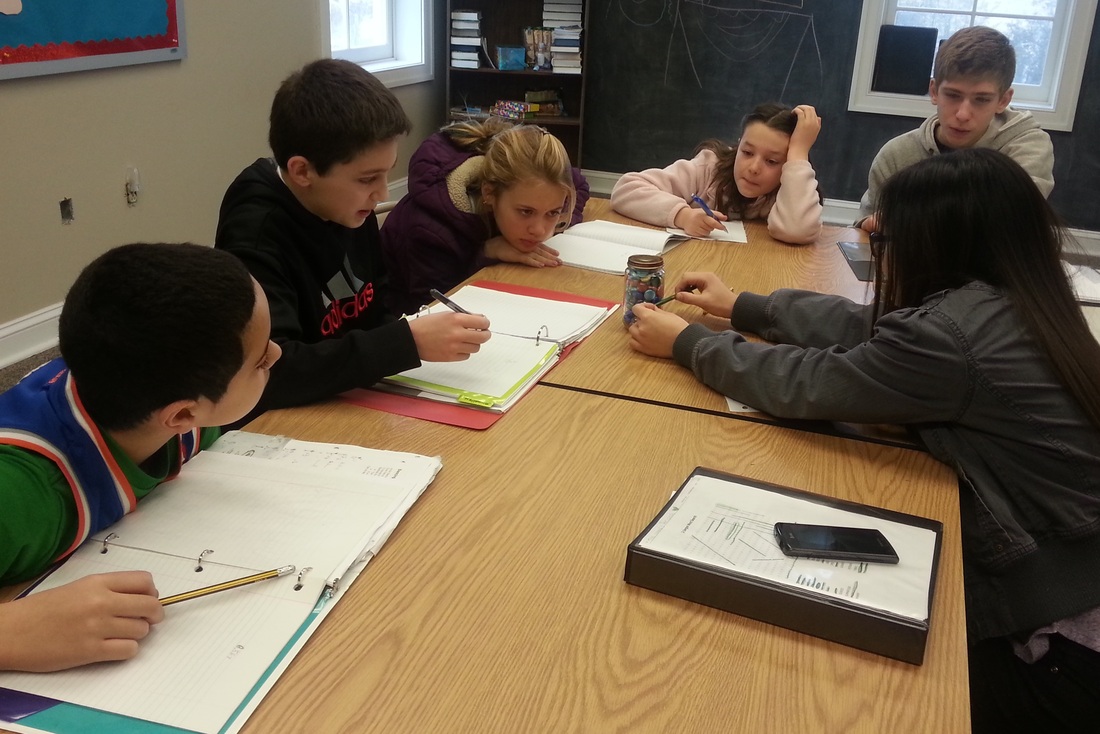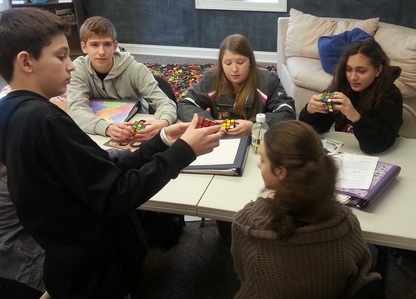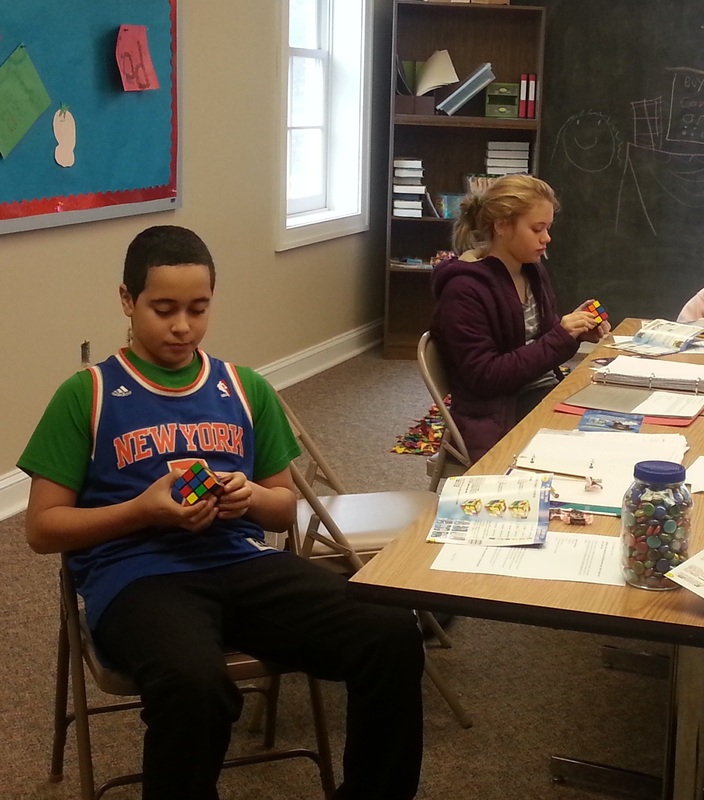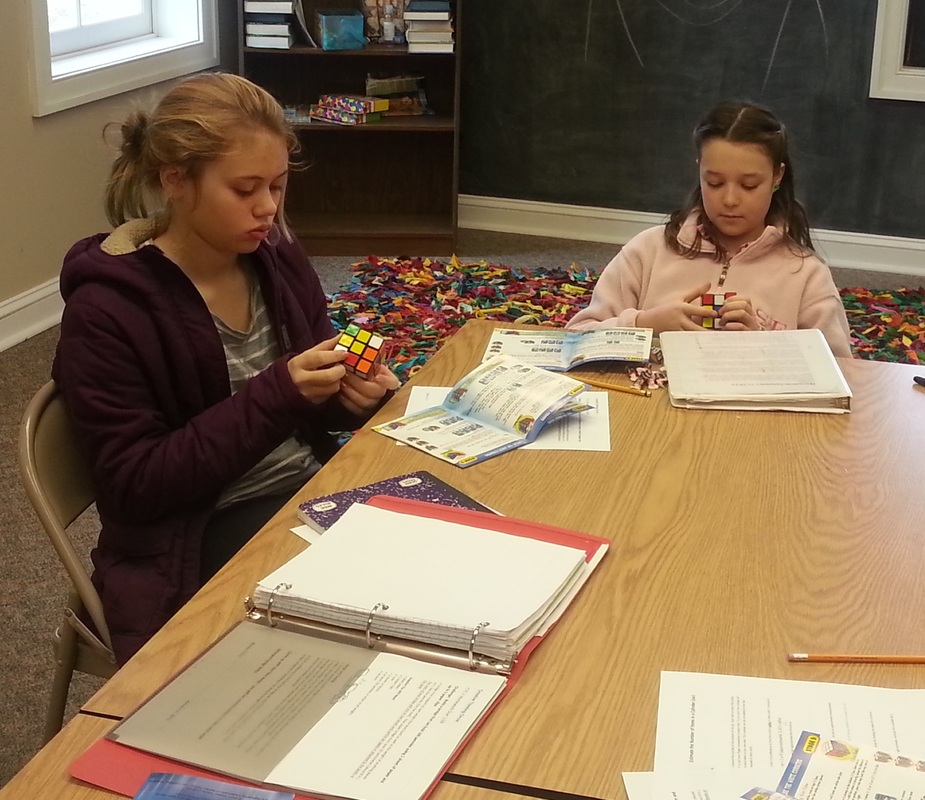16.8 Million Kernels!  The final numbers are in and they are BIG! After much measuring, converting and comparing, our class has determined that it would take 16,837,632 kernels of popcorn to completely fill our classroom .... more or less. (: This amazing estimate is based on a room size of 3,248 cubic feet and an estimated 5,184 kernels of popped corn per cubic foot. Does anyone care to validate? More on Estimation... We continued flexing our estimation muscles by tackling the classic "how many jellybeans in a jar" problem. Rather than jellybeans, I gave the students two different sized jars filled with multi-colored glass beads and asked them to guess how many beads were in each jar. Most students initially just guessed, or computed a rough estimate based on counting how many beads covered a certain area of the jar and then extrapolating. We went on to discuss a more mathematical approach which uses the formula for the volume of a cylinder (handout found here). Essentially, this involves counting the number of beads that form a circle around the base of the jar to get a circumference, using that number to compute a radius, finding the area of the base of the jar (in bead units), estimating the height of the jar as number of beads, and then computing a final volume of beads. This not only provided the students with a good review for computing area of a cylinder, it also allowed them to see that with just a little more effort, their estimates could be greatly improved. Most initial guesses were far off the mark, whereas many of the volume estimates came within 15% of the correct number of beads. Students went on to estimate the number of mini tootsie rolls in a plastic box using the formula for volume of a cube. And then of course enjoyed the fruits of their labor by partaking in a few of the chewy treats! In addition to employing these basic volume calculations to improve our estimates, we also discussed the challenges of estimating irregularly shaped items (such as the glass beads and the tootsie rolls) versus more uniformly shaped items (such as marbles). So, the next time you find yourself facing a "jellybean jar" challenge at your local library or museum, remember these estimation tips and you may just win that itunes gift card! Wrapping up with Rubik
Next Week - Final Class! Sadly, next week will be our last class meeting. Students were sent home with a building challenge - to design a paper bridge capable of supporting the weight of 100 pennies. Make sure you work on these at home and perfect your designs. You must recreate your bridge in class and prove that your design is structurally sound and will not buckle under the pressure! We will also have a surprise building challenge - and who knows, there may even be a prize at stake...
Good luck and have fun! Comments are closed.
|
Categories
All
Archives
May 2016
|





 RSS Feed
RSS Feed